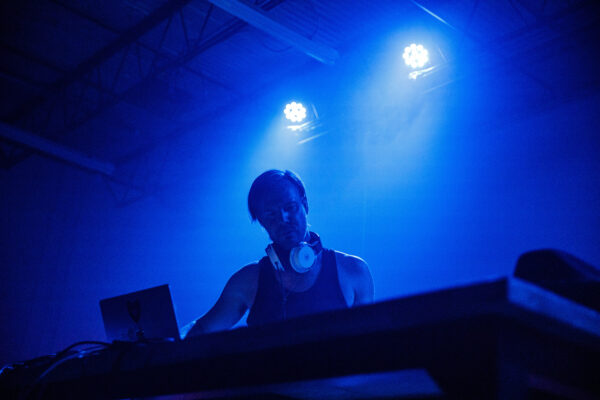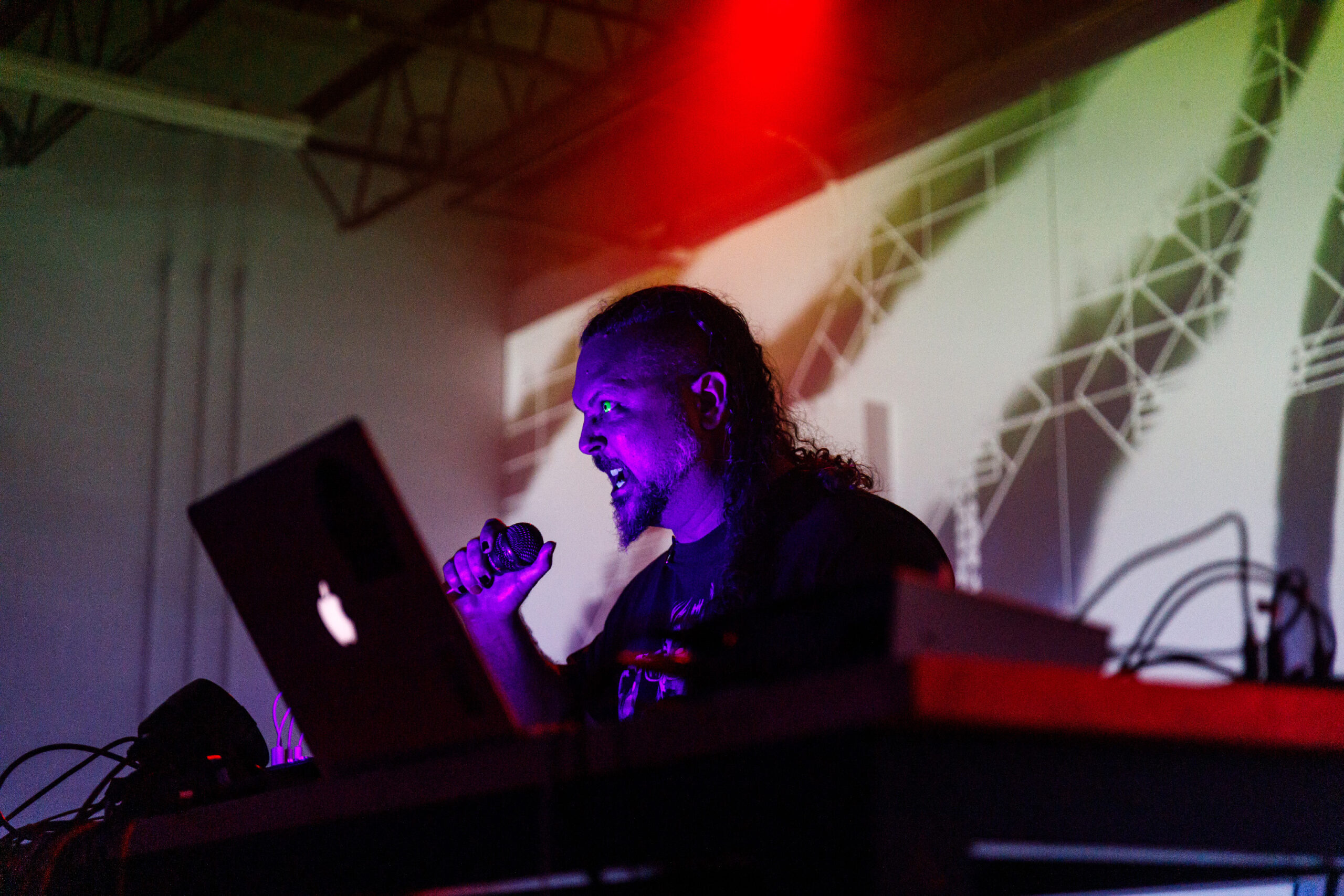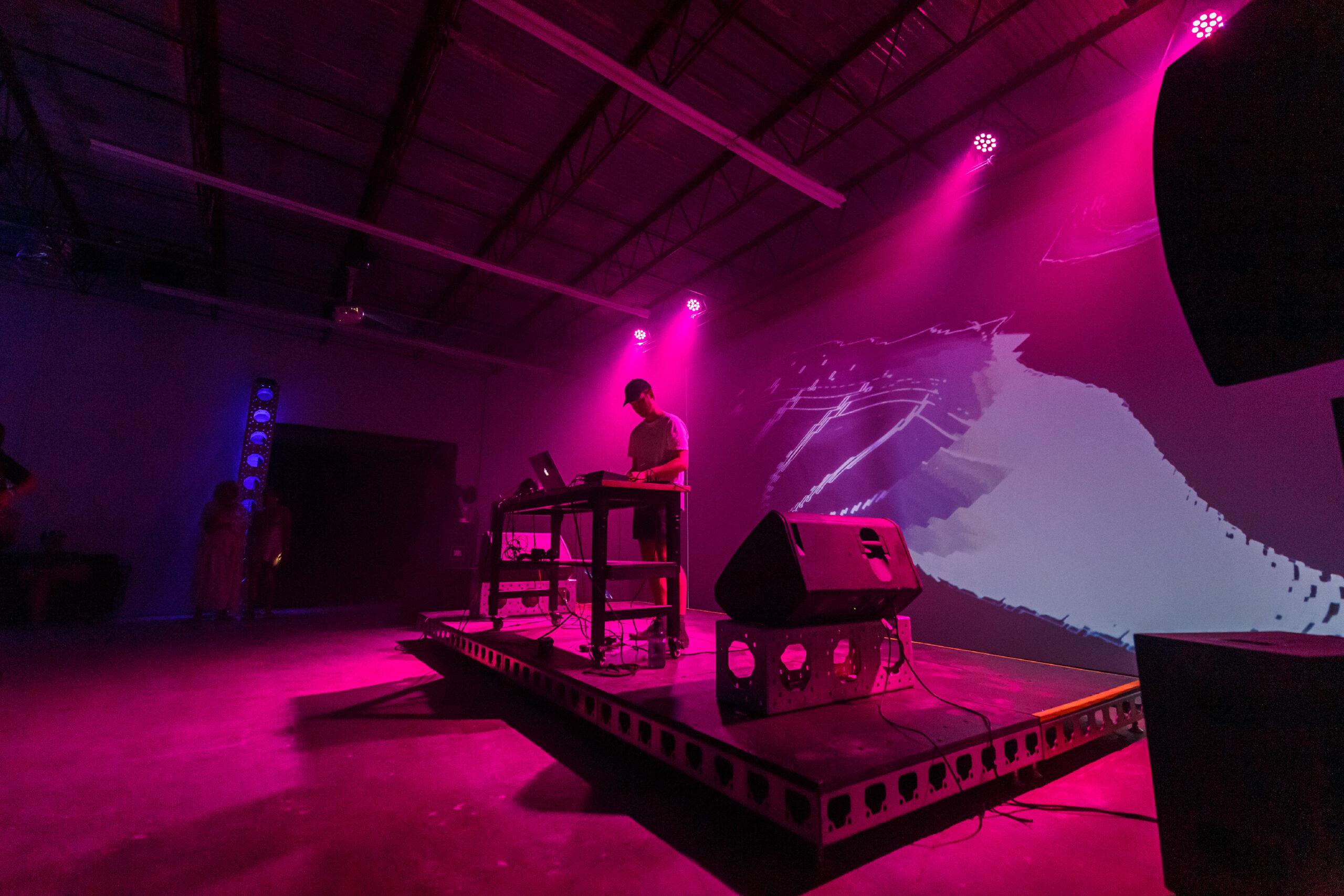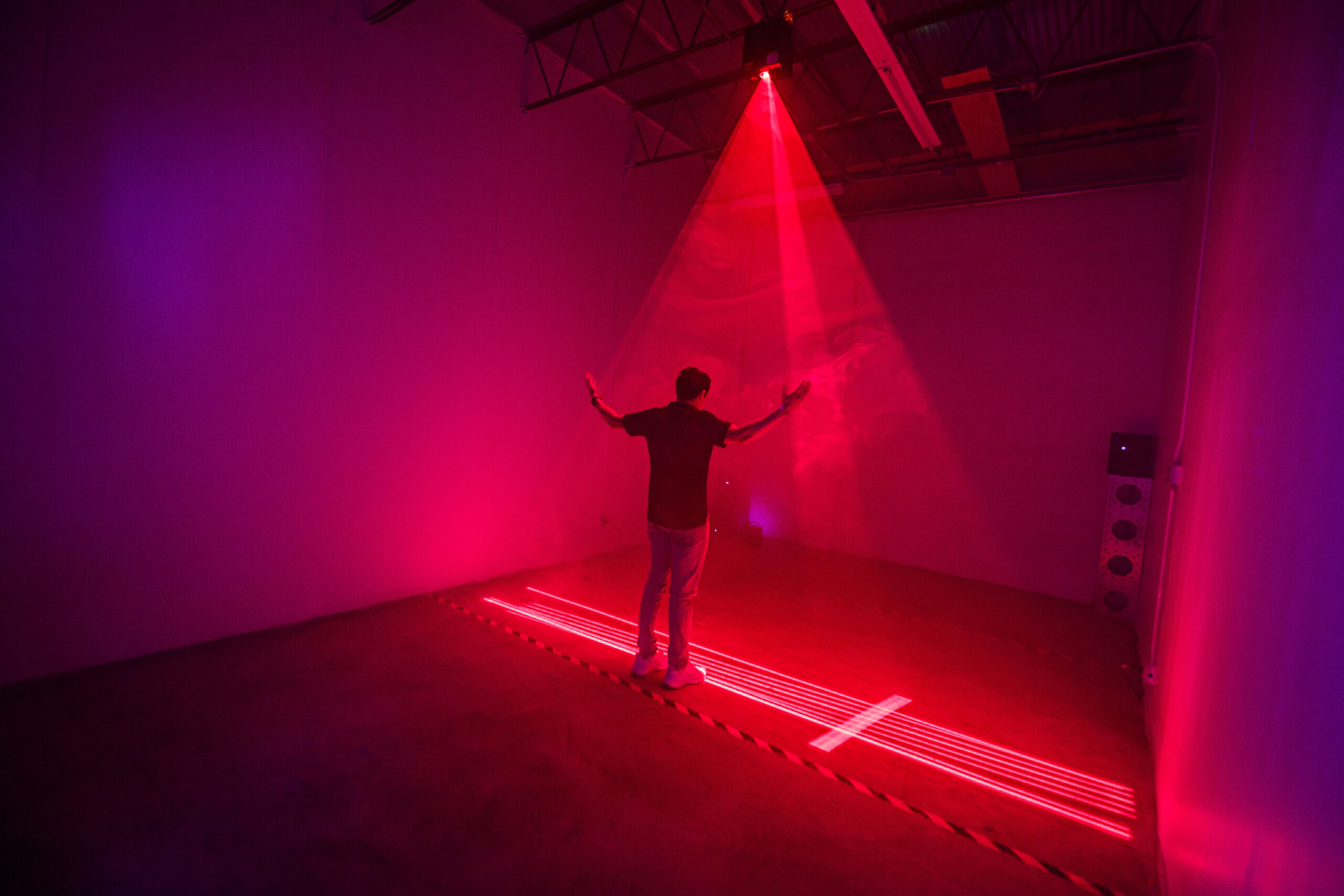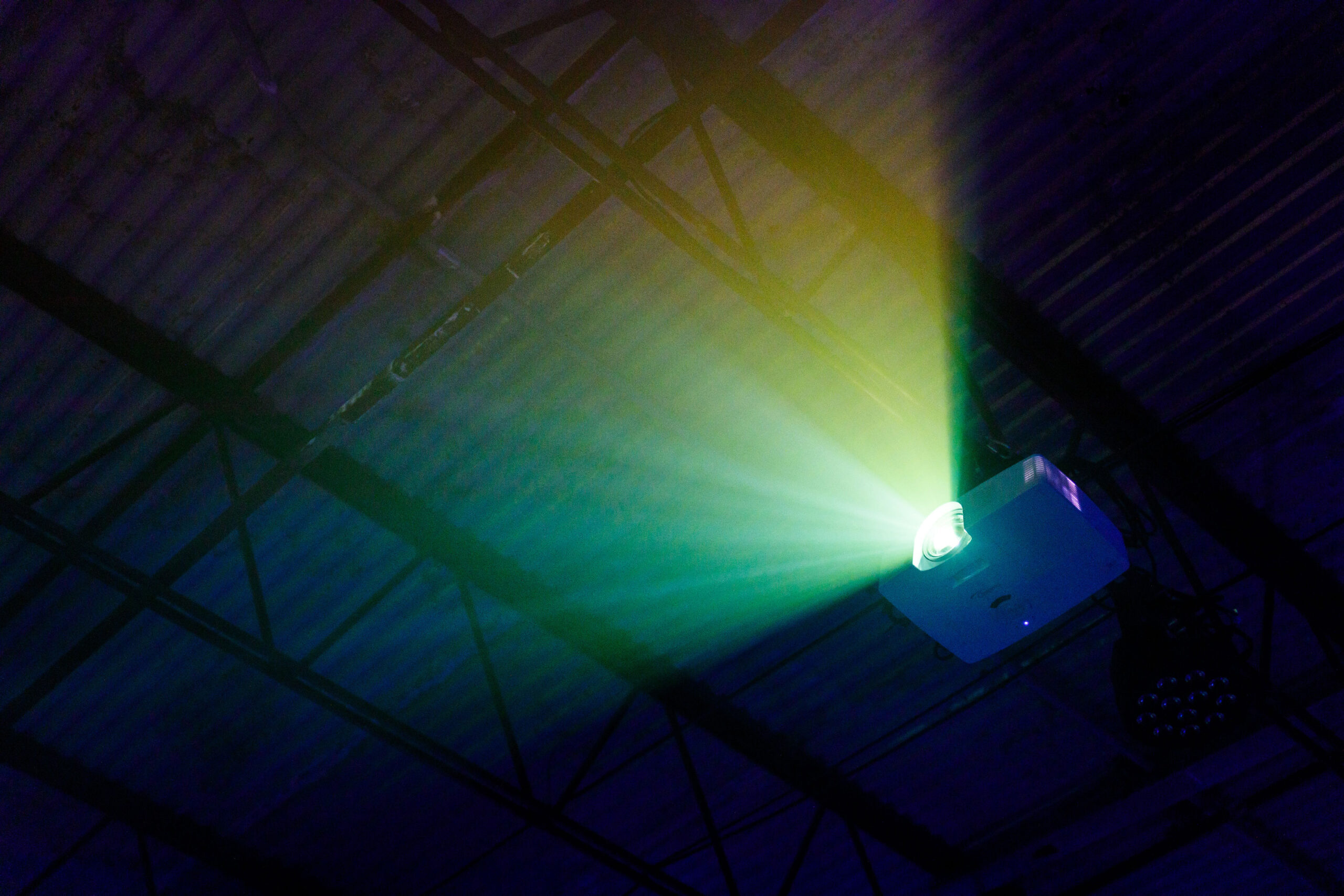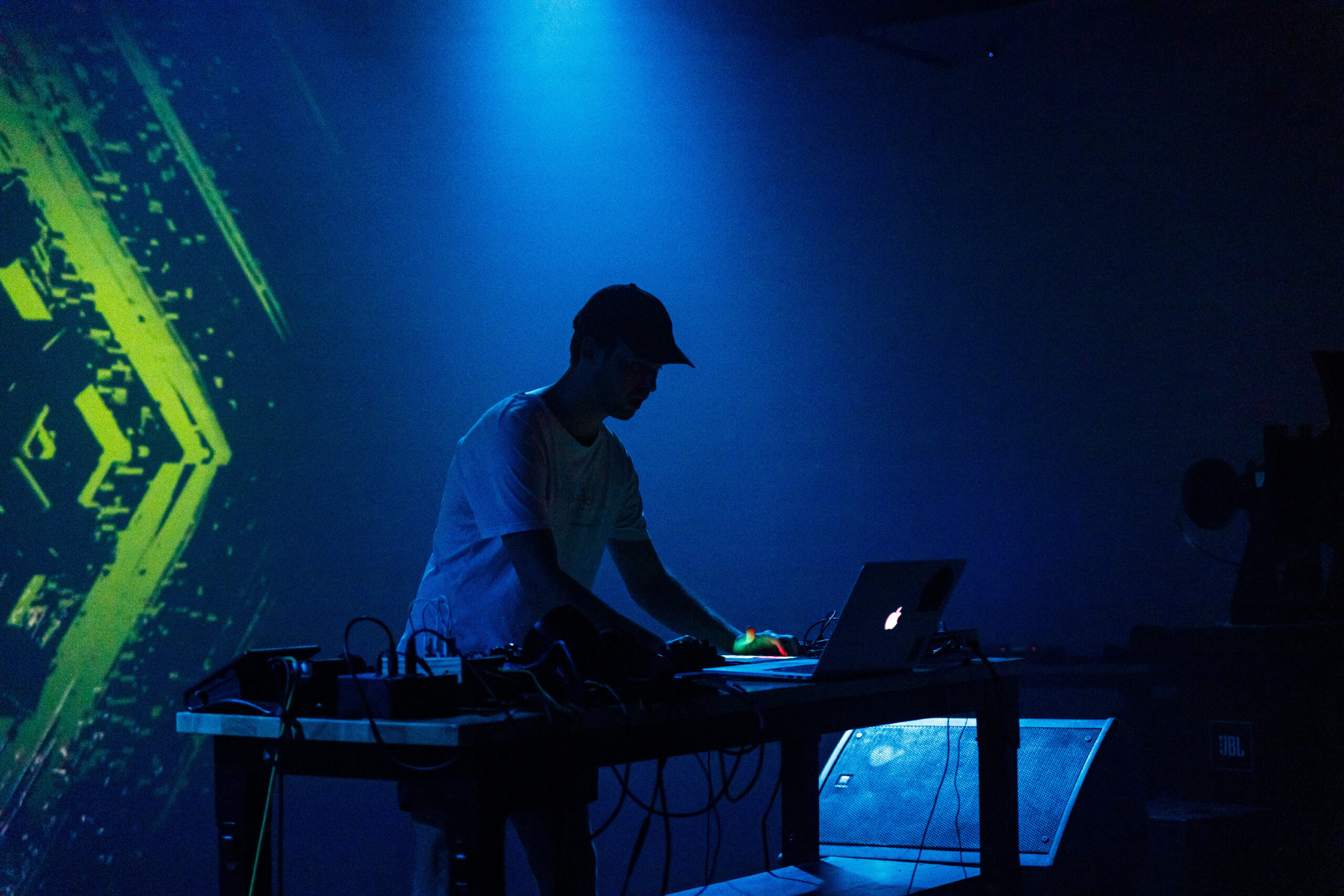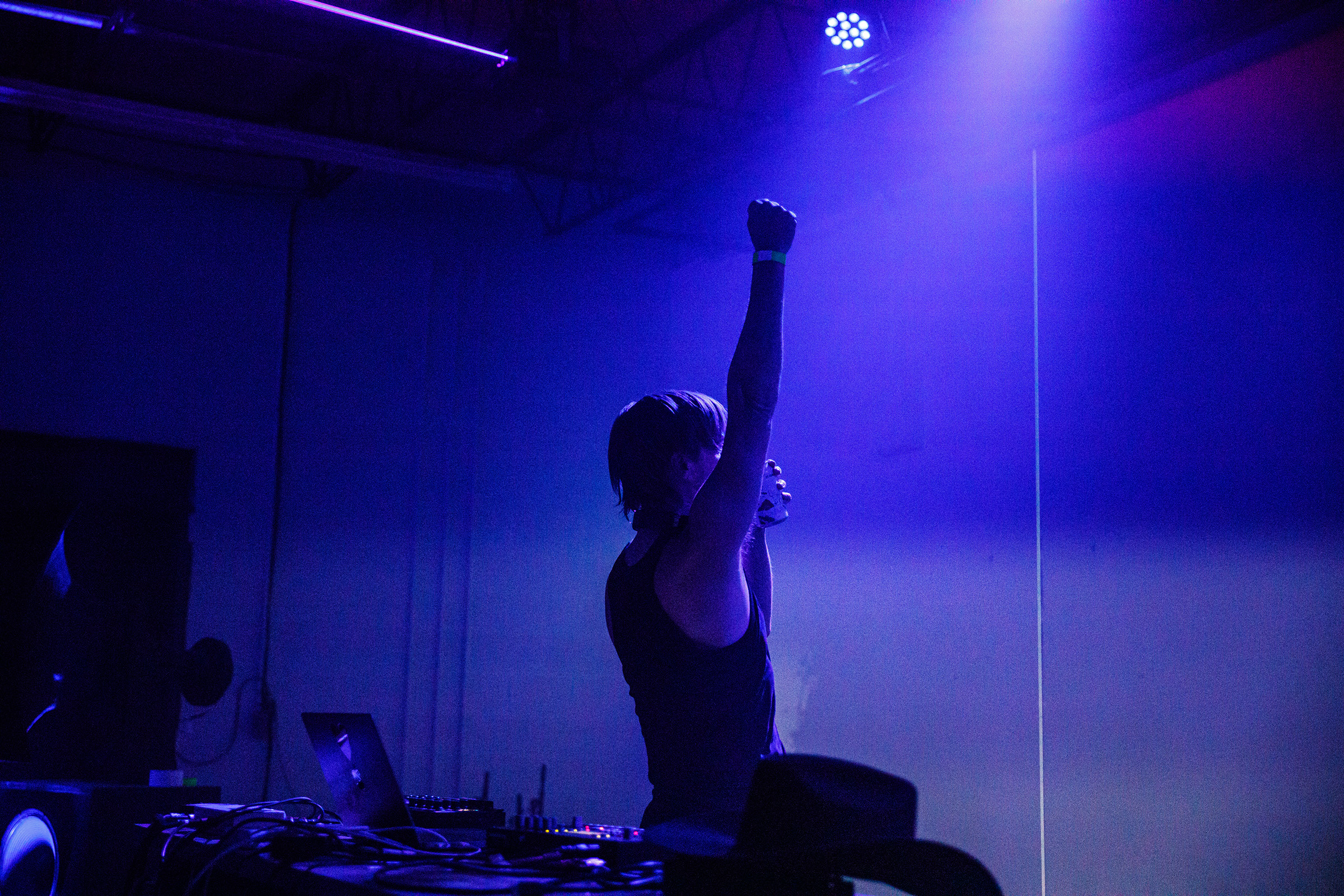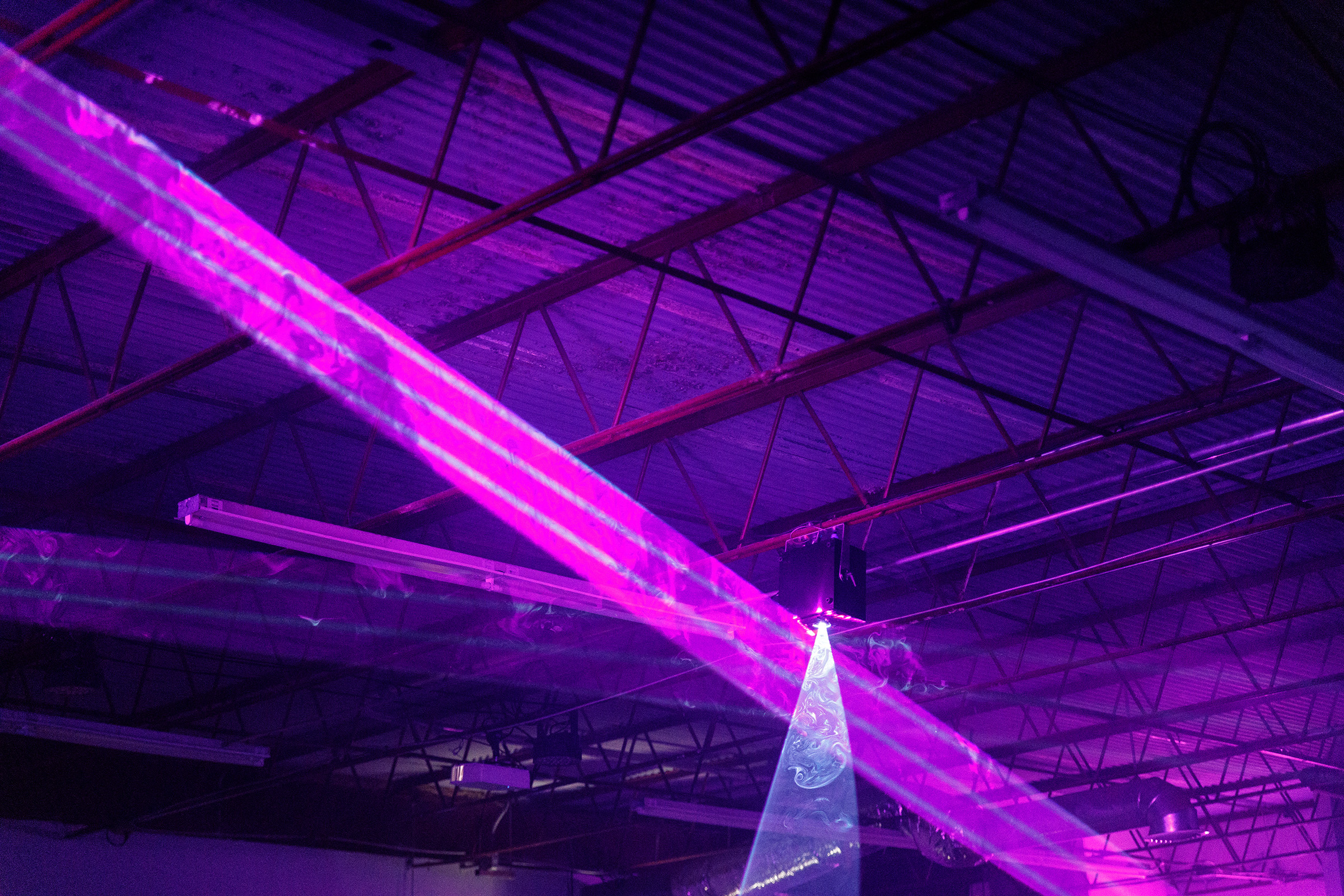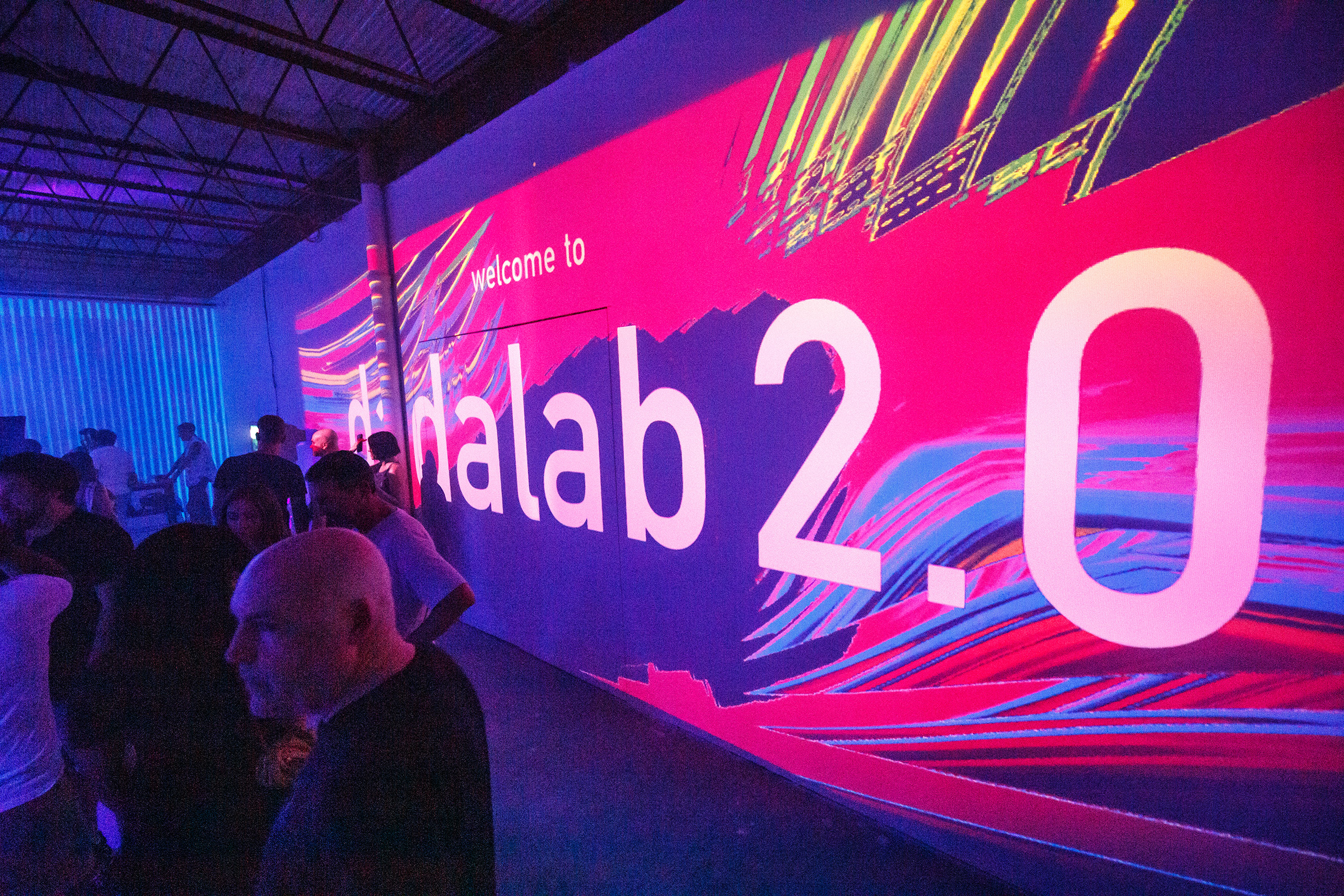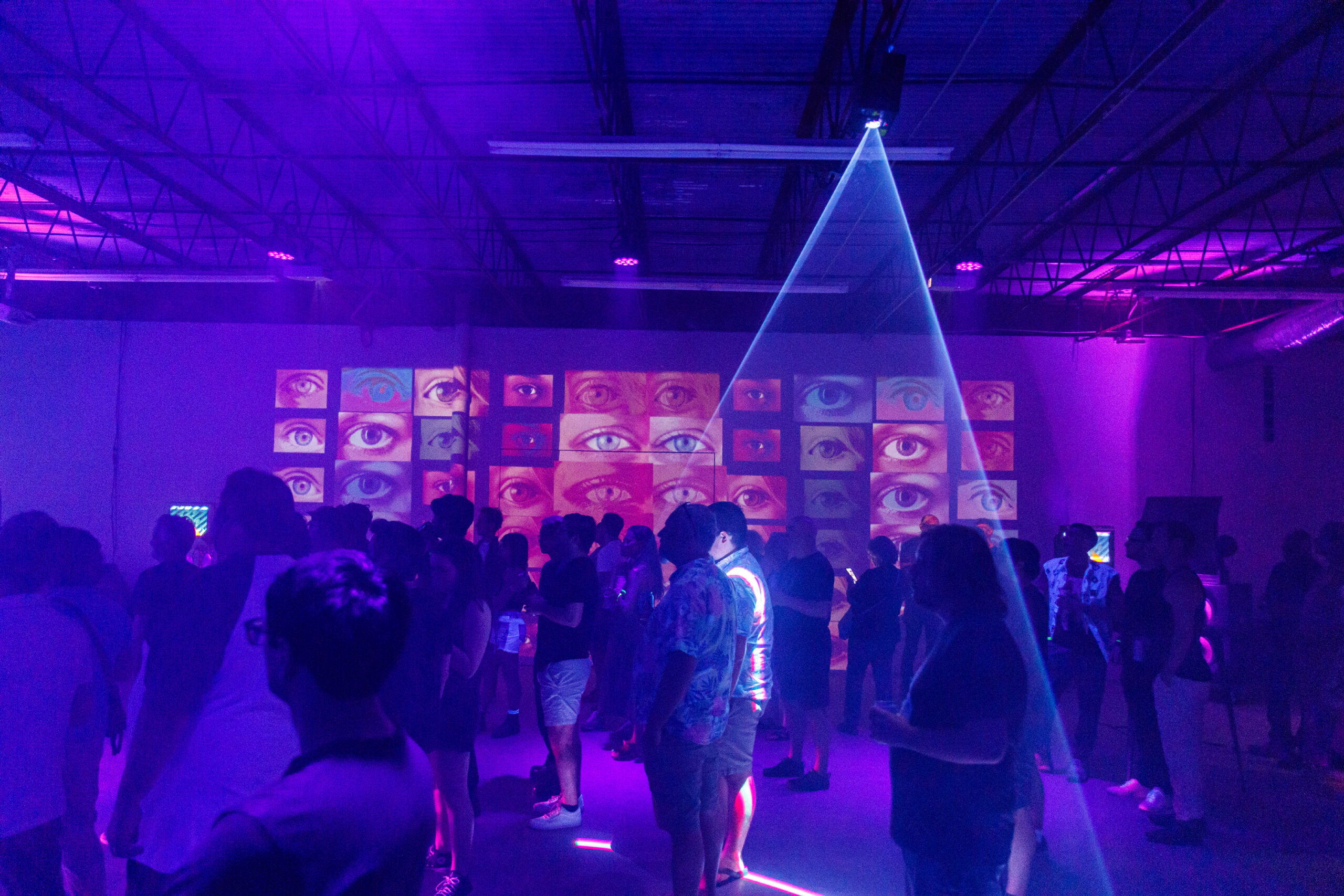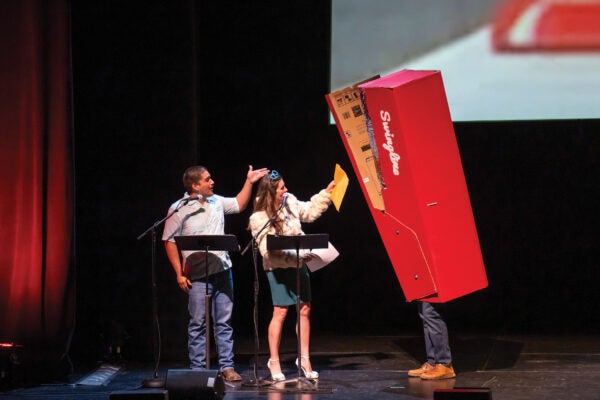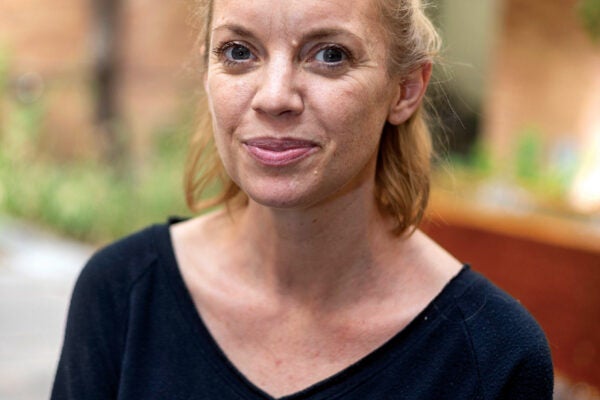Ghostly pale lines produced by a high-powered projector flicker across a wall as the glitching scratch of static intermittently seeps from a row of black speakers. Gradually, a throbbing bass line punches through the noise as the projected lines weave together to form a tangled web.
“I play with electricity. … I have no desire to engage the subject from a purely traditional perspective,” UT assistant professor Kyle Evans explains on his website.
At the forefront of this dizzying monochromatic spectacle within the walls of dadaLab, his immersive art studio, Evans bends over a table laden with blinking electronic music equipment. As his horn-rimmed glasses reflect the faint glow of two laptops, the multimedia artist and educator rhythmically twists knobs and prods buttons. With each gesture, hypnotic drumbeat and carefully programmed projection, Evans draws his audience further into the world of pulseCoder, his latest electronic music project.
“All of my visuals, and sometimes my audio, have some kind of glitch aesthetic element,” he says, referring to the distorted, halting movements composed under his DJ name pulseCoder. This performance project is an immersive synthesis of Evans’ chief artistic and educational specialties: sound, light and electricity.
Instructing part time at UT since 2020, Evans accepted a full-time position this year in the Department of Arts and Entertainment Technologies. In the belly of the University’s expansive Performing Arts Center, he spends time teaching lighting design, video projection and electronic musical instruments.
“I’ve had students create some pretty amazing things that don’t already exist,” he says. “One student — a juggler — created a motion-sensing instrument that he could control depending on the speed and pattern of his juggling. Totally wacky.”
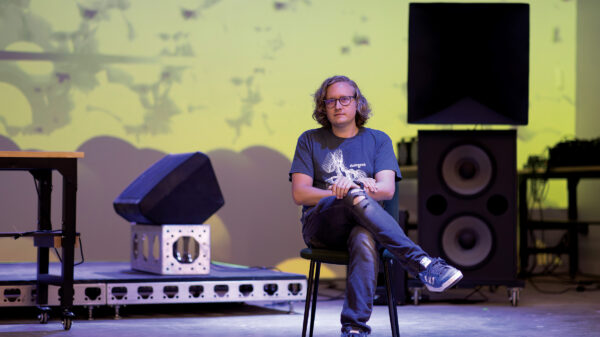
Evans amusedly recalls where his journey as a sound designer began: middle school band.
“I played the tuba and was a band nerd. Then, in eighth grade, I started skateboarding and thought that was way cooler,” he says, laughing. “At the same time, I bought two turntables and started learning how to scratch vinyl like a DJ.”
Following countless trips to Half Price Books in search of cheap vinyl and a brief stint playing bass in a high school punk band, Evans made his way to the School of the Art Institute of Chicago, where he discovered a passion for audio production. The young creative dove into the world of intelligent dance music (IDM) and began constructing his own instruments.
“I was and still am really interested in bringing physicality into the electronic music world,” Evans says. “One of the instruments that I developed during my master’s was actually an electronic didgeridoo. If there’s a traditional instrument that I can play, it’s that!”
A haunting, guttural groan emanates from a grainy video on Evans’ YouTube channel. On a darkened stage amid coils of cables, the then-master’s student slowly brings a 4-foot PVC pipe covered in handmade switches to his lips. Almost ritualistically, Evans blows into the hollowed mouthpiece, occasionally adjusting the angle of the heavily modified and modernized Indigenous Australian instrument in a performance that caught the eye of Popular Science magazine.
“I was always into performing electronic music, but during my master’s degree, I realized that I wanted to add visuals on top of my music, so I started taking classes about creating real-time video,” Evans says, reflecting on a particularly memorable project dubbed “de/Rastra,” which involved a hacked tube TV spewing glitching visuals and static-heavy electric audio.
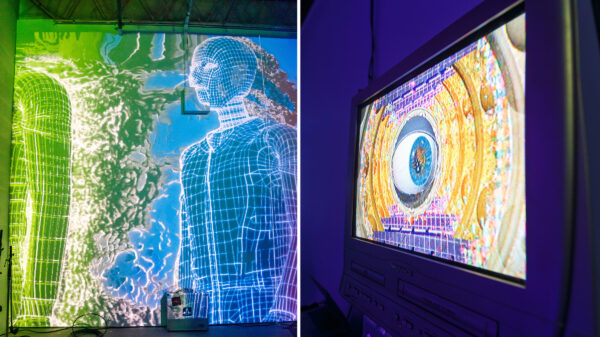
The Houston-born artist doesn’t play around when it comes to setting up shop in some of the most eclectic nooks and crannies of Austin’s music scene. Along with teaching at UT’s School of Design and Creative Technologies, Evans has fostered a passionate and widespread community as the managing director of his nonprofit, dadageek, an educational hub that offers classes centered on the convergence of visual art, music and technology.
“We have a lot of programmers who want to learn how to make electronic music, and we also have a lot of artists who want to learn the tech side of things, like writing code, programming light shows and building their own instruments. Dadageek brings everything together,” Evans says.
On a sweltering summer morning, Evans, wielding a can of Red Bull, walks through the freshly painted halls of an East Austin warehouse that will become dadaLab, dadageek’s physical location.
“We had to close our previous location due to city development, but we’ve been super lucky to acquire this space that’s only a block away,” he says. “I’m really looking forward to having this larger space open by July. There’ll be more room for performances and classes.”
Since the organization’s inception in 2016, Evans and his co-director Barna Kantor, a Hungarian artist, have overseen dadageek’s transformation into an internationally recognized education platform. From offering hundreds of classes through its online campus to hosting electronic music and visual media installation events around Austin, the nonprofit has made waves in the city’s experimental performance scene.
“We have a huge range of people coming in. Some know a little, some know nothing about it, and our courses can cover that entire range of skill and interest,” Evans says. “We’ve had so many artists come in who knew nothing about programming light shows and synthesizers, and now they’re doing incredible things.”
In April, with Evans’ guidance, dadageek students and a pool of internationally recognized composers collaborated to produce Ghost Line X, an immersive 300-foot-long sound installation consisting of 15 large speakers arranged across the Moody Amphitheater at Waterloo Park. The installation became a part of Austin’s Fusebox Festival, and Evans found himself blown away by the local turnout and interest.
“I’m very, very proud of the community that we’ve built here at dadaLab and dadageek,” Evans says. “It’s our pleasure to get to work with such an amazing crew of artists, and it’s amazing to see so many people coming out to events and enjoying the artwork.”
Evans also takes pride in his hands-on approach to teaching at UT, especially in his do-it-yourself synthesizer class, where students learn how to build their own electronic instruments — much like they would in a class at dadageek.
“Students get to do a little bit of everything, which is what we really want with the Arts and Entertainment Technologies program,” he says. “When they come out of these classes, they’re essentially a Swiss Army Knife of art and tech.”
In the fall, Evans teaches Immersive Audio, a new class where students will have a chance to work with the University’s latest motion-tracking technology while constructing large-scale audio and visual installations inspired by the exhibits in Austin’s Wonderspaces.
“I love seeing things come together whenever a student has an ‘aha’ moment,” he says. “Their eyes always light up when they realize something, and you can see their brain jump a step, kind of like an upgrade. It’s very beautiful when things come together in the classroom.”
